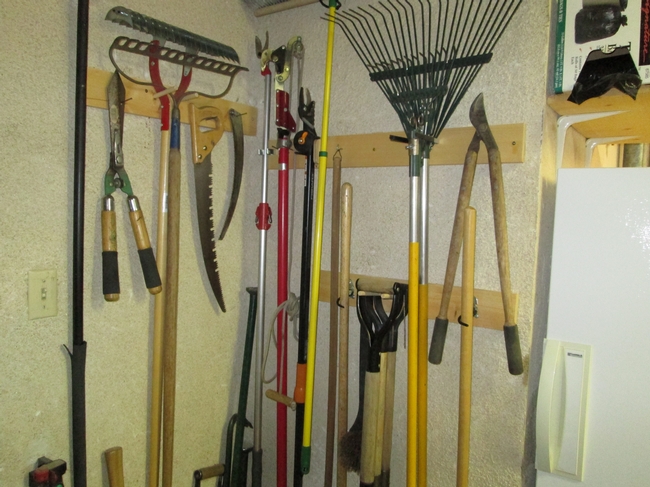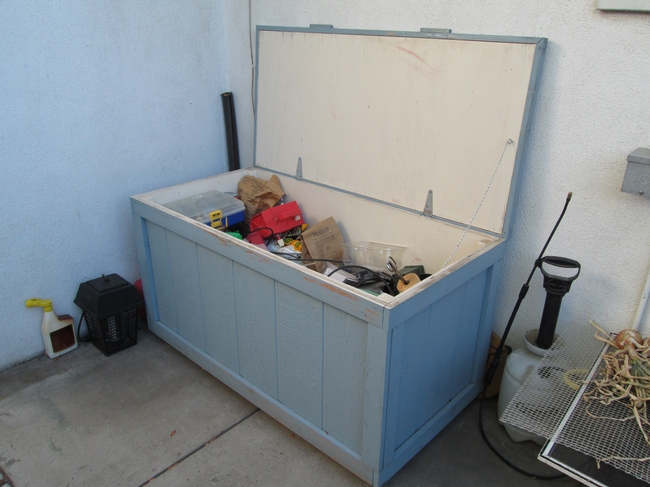Even minimalist gardeners acquire tools that need to be stored and maintained, and as years go by the collection gradually increases representing a significant financial outlay. However, if well cared for good tools will last a lifetime so it behooves us to make the extra effort to look after them well.
The chief requirements are that the tools be kept dry and easily accessible but not in the way, that blades should not be damaged, and that they do not present a hazard such as tipping over, or falling down and hitting someone. A dedicated garden shed is ideal for storage but if lack of space eliminates this possibility alternatives have to be found.

I keep small tools such as pruners, trowels, dandelion weeder, twine, scissors and gardening gloves in a large box of the type produced for storing patio furniture cushions. This also contains basic chemicals such as rooting hormone, Tanglefoot, fertilizers and insecticidal soap, hand sprayers, and it can be locked for safety. A fishing tackle or compartmentalized craft box makes an excellent organizer for drip irrigation nozzles, connectors, goof plugs etc.
Another idea for keeping small tools handy is suggested in the Sunset Western Garden book – a mailbox mounted on a post discreetly placed in a spot close to where these tools are most often used.
The most awkward things to store are items such as bird netting, shade cloth, weed cloth and frost cloth. It is amazing how the packs, so flat and neat on purchase, expand into a voluminous mess once the bag is opened. I get around this by folding them the best I can and then rolling them, tying the rolls securely with string and storing them vertically in a 32-gallon garbage can with a tight fitting lid.
The upper rails on the back panels of a “good neighbor” panel fence can have a series of ladder hooks screwed into them which are then used to store spare coils of irrigation tubing, hoses, watering cans, or the metal hoops from row covers. Similar hooks can be inserted into the lower rails and used to store bundles of plant stakes. Ladders can be stored horizontally on a fence or wall supported by hooks designed for the purpose.
Plant pots and seed flats are stacked by size, and kept in a 40 quart utility bucket which keeps them contained and can be used to sterilize them when necessary. Surplus ones are either recycled or donated to growers.
Pressure sprayers (empty and clean) should be kept away from direct sunlight since the UV light tends to degrade plastics. I learned this the hard way when a 1 quart hand sprayer exploded as I pumped it up, drenching me in insecticide! (It was organic, hence the stink of garlic, rosemary and worse that pervaded my being for several days but it could have been much worse).
Large tomato cages are always a bit of an eyesore when not in use, but they can be put to advantage in the winter by wrapping and securing frost cloth around the outside, placing them, with a layer of straw inside, over any tender plants. The frost cloth prevents the straw from blowing away.
Storage requirements will differ depending on circumstance, but the aim is to be able to find and easily access any tool, without taking up valuable growing space in the process.
Do you have any helpful ideas or tips? Share them below!
